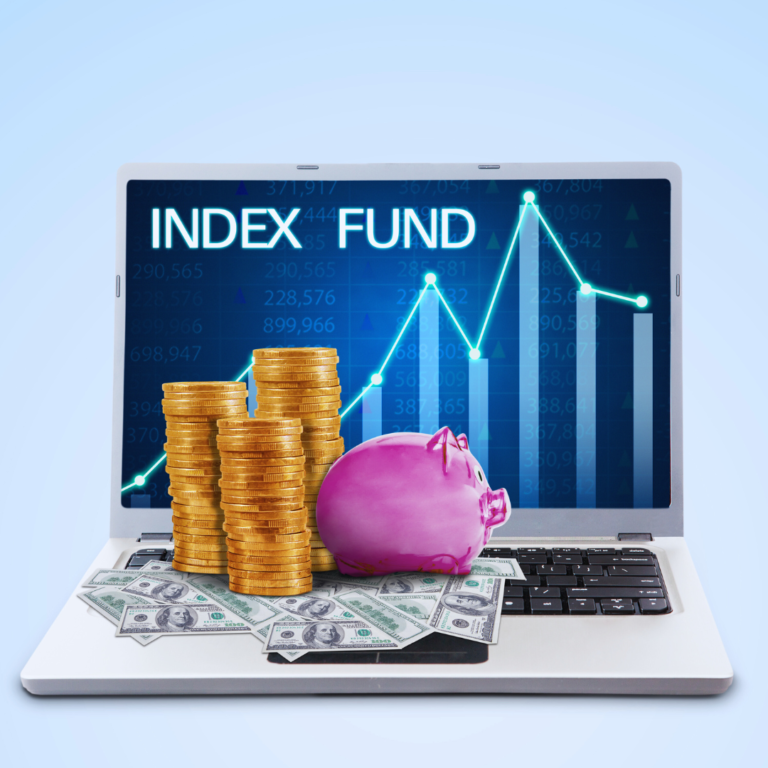
Starting to invest can seem daunting, but choosing the right approach is crucial for success. Investing in index funds is one of the simplest and most effective ways to build wealth over time. These funds offer a way to invest in a diversified portfolio, reducing risks associated with individual stocks.
Index funds track a specific market index, such as the S&P 500. This means investors can buy into a broad market segment without needing to pick individual stocks. ETFs (Exchange-Traded Funds) work similarly, providing flexibility and ease of trading while offering many of the same benefits.
Understanding the basics of index funds is essential for anyone looking to grow their financial future. They require less maintenance compared to actively managed funds and often come with lower fees, making them an accessible option for new and experienced investors alike.
Understanding Index Funds and ETFs
Index funds and Exchange-Traded Funds (ETFs) are critical investment vehicles for those looking to enter the stock market with minimal complexity. Each serves to track market performance in different ways, allowing investors to diversify their portfolios efficiently.
Basics of Index Funds
An index fund is a type of mutual fund designed to replicate the performance of a specific market index, such as the S&P 500. Investors buy shares in the fund, which in turn invests in the same stocks included in the index.
Key features include:
- Low Fees: Because they are passively managed, they usually have lower expense ratios compared to actively managed funds.
- Diversification: By investing in an index fund, an investor gains exposure to a wide array of stocks within that index, which reduces risk.
- Long-Term Growth: Index funds are generally suited for long-term investors, as they tend to grow alongside the market over time.
Investors typically find index funds appealing for their simplicity and the steady growth potential they provide.
Exchange-Traded Funds (ETFs) Explained
ETFs are similar to index funds, but they trade like individual stocks on an exchange. This means investors can buy or sell shares of an ETF throughout the trading day at market prices.
Notable characteristics include:
- Liquidity: Investors have flexibility with buying and selling, allowing for quick access to cash if needed.
- Variety: ETFs can track various indexes, commodities, or sectors, providing diverse investment opportunities.
- Tax Efficiency: ETFs often have more favorable tax treatment compared to mutual funds, distributing fewer capital gains.
They appeal to both active traders and long-term investors due to their versatility and ease of access.
Investment Strategies and Portfolio Building
Investing in index funds requires strategic planning and careful consideration of portfolio allocation. Effective strategies can help maximize returns while managing risk through diversification.
Strategies for Index Investing
One fundamental strategy for index investing is the “buy and hold” approach. This method involves purchasing index funds and maintaining them for the long term, allowing for compound growth and minimizing transaction fees.
Another popular strategy is dollar-cost averaging. This technique involves investing a fixed amount regularly, regardless of market conditions. It helps reduce the impact of volatility by spreading purchases over time.
Investors should also consider sector diversification. By allocating funds across various sectors such as technology, healthcare, and consumer goods, they can mitigate the risk associated with any single industry’s performance.
Designing Your Portfolio Allocation
Proper portfolio allocation is crucial for aligning investments with individual risk tolerance and financial goals. A common guideline is the 60/40 rule, where 60% of assets are allocated to equities and 40% to fixed income.
For risk-averse investors, a more conservative allocation may focus on 40% equities and 60% bonds. Conversely, aggressive investors might target 80% equities and 20% bonds for higher potential returns.
A well-structured portfolio should also include international index funds. This adds geographic diversification, which can protect against domestic market downturns. Regularly reviewing and rebalancing the portfolio ensures that it maintains the desired allocation over time.
Analyzing Performance and Costs
Evaluating an index fund involves both performance assessment and cost analysis. Understanding these factors can aid in selecting the right fund for investment goals.
Measuring Performance and Benchmarks
Performance analysis of an index fund mainly focuses on its returns compared to a benchmark index, like the S&P 500. This comparison provides insight into how well the fund tracks its designated index.
Key performance metrics include:
- Annualized Returns: Average yearly return over a specified period.
- Trailing Returns: Returns calculated over the last 1, 3, 5, and 10 years.
- Standard Deviation: A measure of the fund’s volatility relative to the benchmark.
Investors should assess how consistently the fund mirrors its benchmark’s performance. A strong correlation indicates effective tracking, while significant deviations may prompt further investigation.
Understanding Expense Ratios
The expense ratio is a crucial metric that represents the fund’s operating costs as a percentage of its assets. It includes management fees, administrative costs, and other expenditures.
Investors should consider:
- Lower Fees: Aim for funds with expense ratios below 0.50% to maximize net returns.
- Impact on Returns: Higher fees can significantly diminish long-term growth potential. For example, a 1% fee can reduce returns by 20% over 30 years.
Analyzing the expense ratio helps in determining the cost-effectiveness of an index fund. A lower ratio can enhance overall investment performance, making it a critical component of any investment decision.
